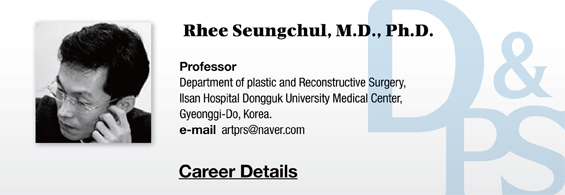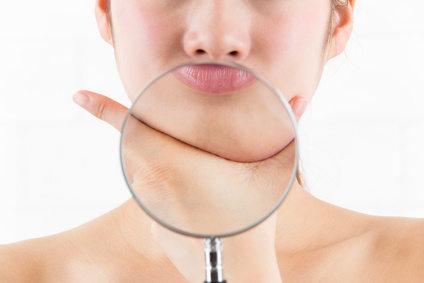

Starting with this article, we will take an in-depth look at the aesthetics of the lower face. Before we delve into what constitutes an attractive jawline, let us first discuss the anatomical characteristics of the jaws(maxilla and mandible). In Korea, the phrase “V line” has recently become widely used. “V line” was a catch phrase of a beverage commercial that featured an attractive actress.
The truth was, the actress featured in the commercial did not have the V-line outline of the lower face, nor was the advertised beverage in any way causally related to an attractive jawline. However, the public came to recognize the phrase “V line” as the standard of an attractive face. Soon after the beverage commercial, plastic surgeons ran advertisements of their facial contouring procedures using this phrase, proposing that an attractive face has a V-shaped(inverted triangle) outline.
Facial beauty perceptions were distorted and rearranged unconsciously. This V-line concept became even more prominent after Fan Bing Bing, a popular Chinese actress, was featured in various cosmetics advertisements. The ad agency airbrushed the photograph of this actress so that her lower jaw appeared impossibly narrow and sharp, which does not make any anatomical sense.
I think such efforts by the media and cosmetics manufacturers have created a widespread notion that a beautiful outline of the face has a very narrow and sharp outline of the lower jaw. The phrase “V line” became almost an undeniable standard of a beautiful face in certain Asian countries such as Korea and China. However, I think this is a rather ironic phenomenon. It is somewhat discouraging that repeated and ubiquitous ads change the way we think much like brainwashing.
[Advertisement] FCR® (Fractional Prickle CoralCalcium Regentron) – Manufacturer: (www.illglobal.com)]
In Korea, a famous ad campaign repeated the phrase “A bed is not furniture but science.” Not long after, elementary school children started categorizing beds as not furniture. It is a fact, that both adults and children are being brainwashed by the mass media. Koreans generally deem a baby face attractive and people with baby faces do have a narrow lower jaw.
However, actresses such as Kim Tae-hee and Fan Bing Bing who most people find attractive actually have a lower jawline that is closer to a U shape rather than the V shape. Surgical correction for severe malocclusion and bimaxillary prognathism or protruded lips drastically improves the countenance. Before and after surgery photographs of such cases are being used to promote plastic surgery to great effect. Online and print advertising tout small changes to generic techniques as innovative. Many studies are also being published on new surgical techniques of jawline correction.
In the next few articles, I would like to discuss the aesthetics of the lower face. But before we go into this topic, I would first like to cover the anatomy of the jaws and important photogrammetric points for pre-surgery facial analysis. The mandible is the largest and strongest bone in the cranium. It also varies the most widely depending on the gender, age and race, etc.1
We already know that what we view as an attractive jawline changes based on the gender and region.2 The most important anatomical aspect of the mandible is that it is one of the most mobile bone in the cranium, which it is connected to by the temporomandibular joint. The masticatory muscles attached to the mandible carries out a very important function. The mandible is anatomically divided into the symphysis, parasymphysis, body, angle, ramus, condyle and coronoid.
The parasymphysis, as shown in <Figure 1>, starts from the posterior end of canine teeth. The mandibular body is the part from the parasymphysis to the front boundary of masseter muscle.
-To be continued




















